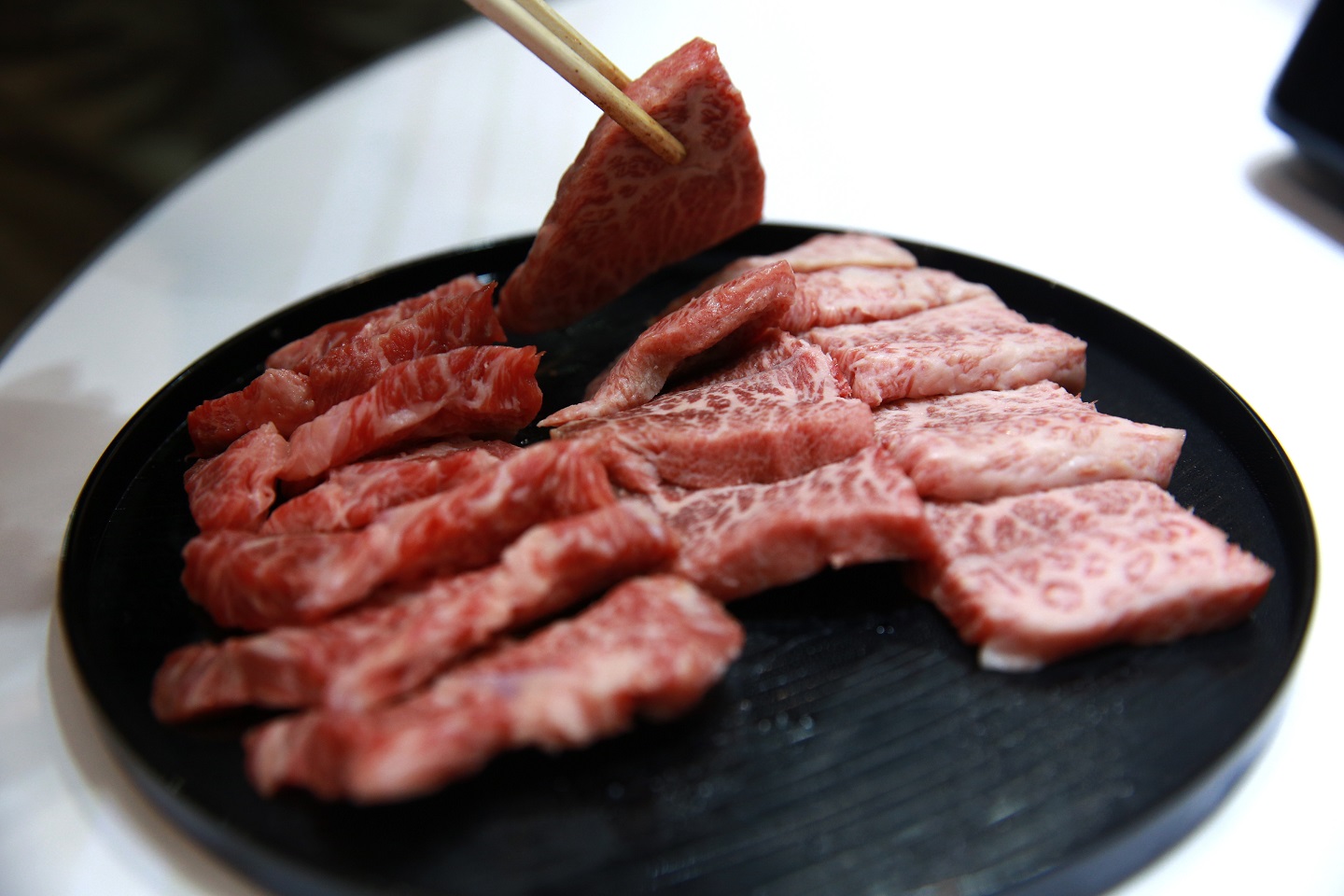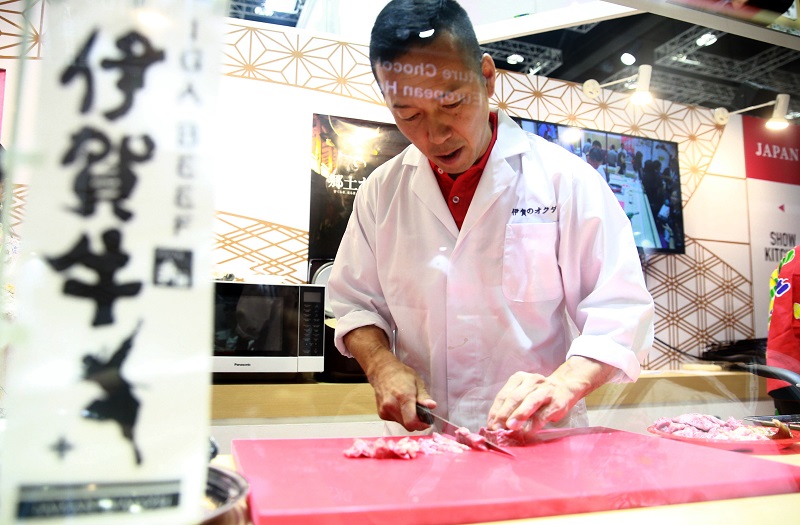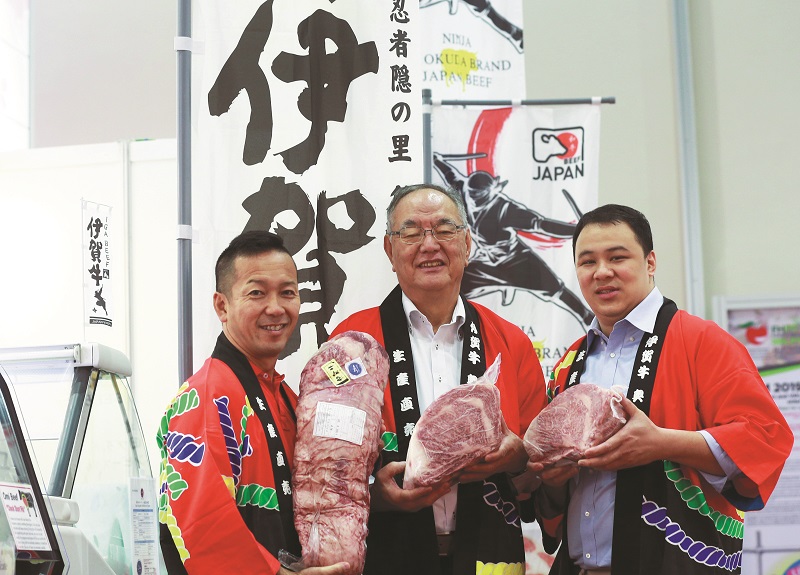
Iga beef has 'cleaner' and more balanced flavours between the meat and the fat (All photos: Sam Fong/The Edge)
Who would have thought that having wagyu beef for breakfast would feel so wholesome? This late morning melt-in-your-mouth protein boost, recently enjoyed at a major food trade fair in town, should have felt closer to an indulgent guilty pleasure. Instead, the experience was pure in a way that only fresh, good food can be.
One may ask, what’s the big deal about wagyu? It is the name given to Japanese beef — specifically meat from four Japanese cattle breeds of Black, Brown, Polled and Shorthorn — that is known for its exceptional texture and taste, as well as exclusivity. But that has changed in recent years.
Globalisation, the growing permeation of Japanese food and the rise of mid-range gourmet establishments have increased not only wagyu’s popularity but also its availability around the world, where the premium meat was once only enjoyed at fine-dining restaurants. Walk into a gastro-pub, chic brunch spot or fusion restaurant in any cosmopolitan city today and you may just find a wagyu burger, sandwich, salad or steak.
But not all wagyu are created equal — and it is not just about the different cuts of beef. Apart from each portion being graded and ranked by its yield and marbling, colour and texture, Japanese beef is also divided into “brands” based on the region it originates from, with those from Kobe, Matsusaka and Ohmi regarded as the top three.
Thus, it was all the more exciting to be introduced to one of the most elusive and rarest of wagyu — Iga beef. Produced in the mountainous Iga city in Mie Prefecture, which borders the tourist-beloved Nara Prefecture on the west, it is also affectionately called the ninja beef, owing to the area being the birthplace of ninjas.
If you get the chance to visit the city, a must-do would be to have a meal at the historic and famed Sukiyaki Kanaya, a butcher’s-cum-sukiyaki restaurant. It was the first to sell Iga beef to Tokyo some 150 years ago during the Meiji era, putting the wagyu brand on the map.
“First, the fat [of the Iga beef] is very soft. And it melts when you cook it — or even before, if you leave it out long enough in warm weather — so it doesn’t clog up your arteries. Secondly, the taste and smell of the meat itself is sweeter and more fragrant,” said Tetsuya Okuda, an Iga beef farmer, supplier and restaurateur whose family was one of the original suppliers to Kanaya.
20190926_peo_tetsuya_okuda_3_sam.jpg

We met Okuda at the Japan Pavilion (organised by the Japan External Trade Organization) of this year’s Food & Hotel Malaysia international exhibition, where he was invited by Malaysian distributor Unifrozen — better known by its wholesale market brand, Wmart — to introduce Iga beef to local gourmands.
“Wagyu is very suitable for our palates,” chimed in Jason Wong, executive director of Unifrozen. He said the response has been great since he started flying in Iga beef monthly in the last quarter. “It’s very soft and mellow, with little to no gamey flavour.”
A taste of the meat proved this to be true. It is about the balance, they say. For example, its better known cousin, Matsusaka beef from neighbouring Mie city, has a high fat-to-meat ratio that provides the meat with a texture like melted butter, but it may feel overly greasy after a few bites. In contrast, Iga beef has “cleaner” and more balanced flavours between the meat and the fat, allowing you to enjoy a whole steak and still be able to eat more after.
Okuda, who now operates the Okuda Gold Farm, a meat shop, the Yakiniku Restaurant in Nabari city as well as the Steakhouse Grazie restaurant in Iga city, revealed some of the secrets that make Iga cows unique.
Surprisingly, it starts with another famed export of the city — Koshihikari rice. It is typically planted on the mountainside, where the more extreme fluctuations of cold winters and hot summers produce good rice. “Our cows eat Koshihikari, the same rice that we eat,” smiled Okuda. Processed to make it much softer, the rice is added to the feed that contains a mix of grass, grain, straw and more.
While they are given free rein in an area similar to a playground as calves with their mothers, Iga cows eventually get an “apartment” each with all-you-can-eat feed (without any force-feeding) for the rest of their lives. They live longer than cattle from other prefectures, as Iga farmers only slaughter their cows at 30 months old, rather than the average 20 months of other wagyu.
“We believe this makes the meat more umami (tasty). By then, they are the age of a young adult,” explained Okuda. “Iga is also unique in that only virgin female cows are used. So, Iga beef has to come from females,” added Wong. “The males are sold to other regions.”
20190926_peo_interview_with_iga_wagyu_beef_2_sam.jpg

While none of the Iga cattle are given beer — dispelling a popular myth about what makes wagyu so good — they are given massages with a bamboo broom. Nicknamed the “massage master”, Okuda spends about two to three minutes each time on every cow, brushing the length of their bodies, especially their back and shoulders, to even out the fat distribution. It is said that this improves the marbling of the meat later on.
As for why wagyu from this city is so rare, Okuda explained that only 150 head of cattle are butchered in Iga each month. Pointing to a map of Nabari and Iga, which are much smaller than other wagyu-producing areas, he said this number just about meets local demand. “We also want to make sure that the quality control is maintained.”
The beef cuts with A5 quality grade are selling for RM300 to RM1,000 a kilogram in Malaysia. Experts say the best way to enjoy the meat is to season it with salt and nothing else.
Okuda recommends the roast, clod (shoulder) and rump, saying that these cuts have the best balance of fat and meat content. They should be sliced into about 20mm or slightly less than an inch thick after cooking.
What about enjoying Iga beef as part of a meal? Okuda answered without hesitation: “First you should try it with shabu-shabu, then on your second night, enjoy a steak, and on the third day, you can have yakiniku — in that order.”
This article first appeared on Nov 11, 2019 in The Edge Malaysia.


